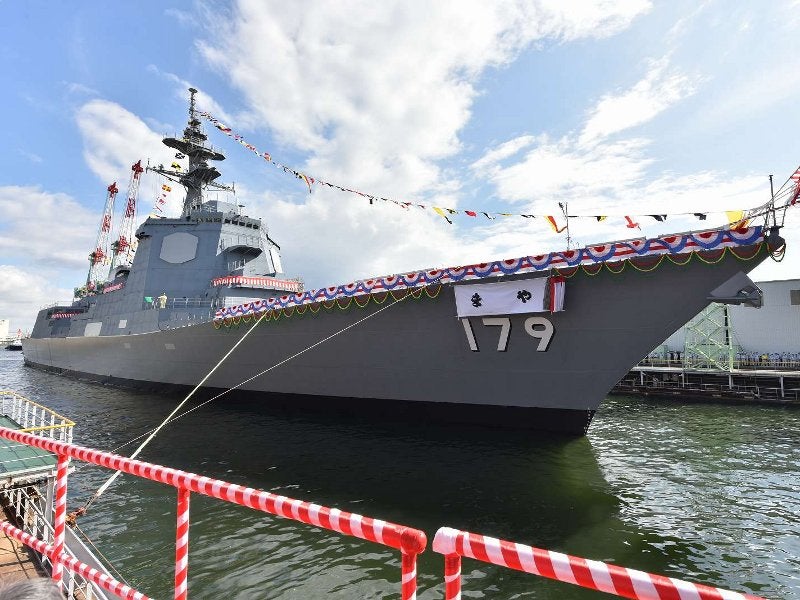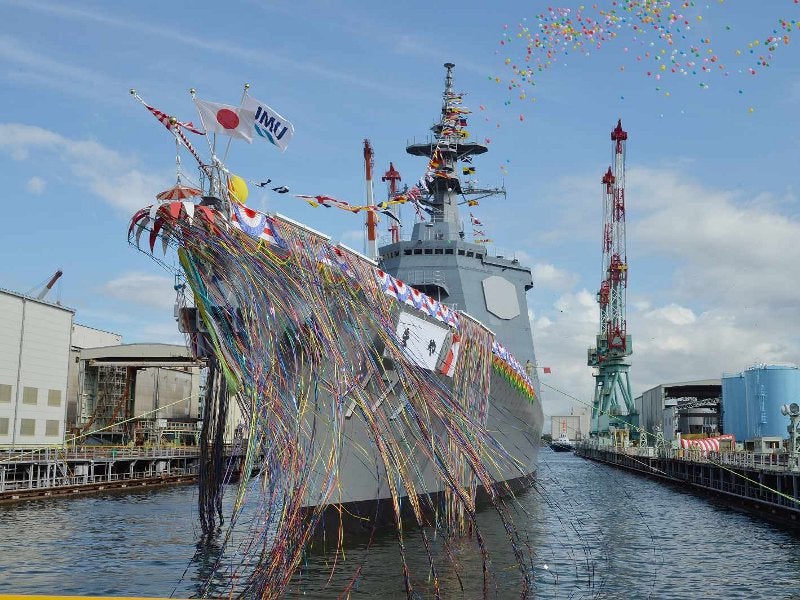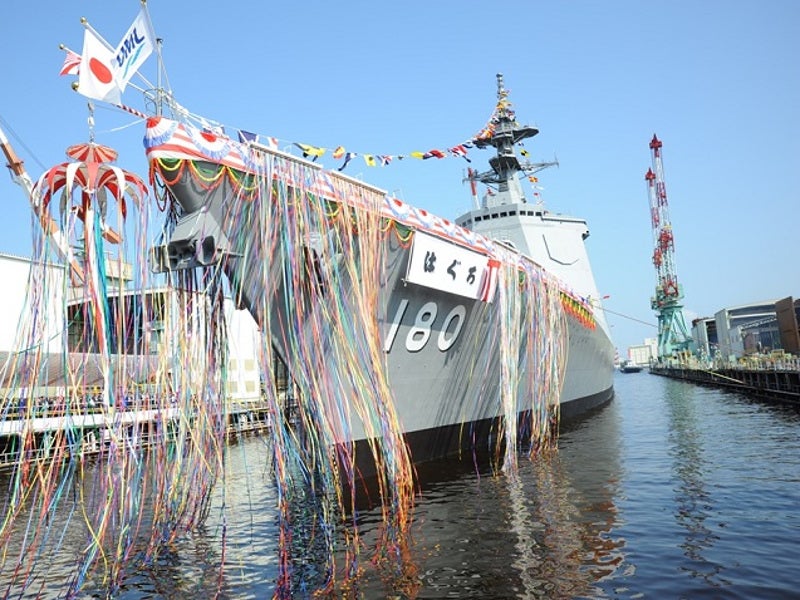Maya-class (27DDG-class) guided-missile destroyer is an improved variant of the Atago-class, which has been operational with the Japan Maritime Self Defense Force (JMSDF) since 2007.
Built by Japan Marine United (JMU) Corporation, the Maya-class ships provide improved threat detection capability than its predecessors.
The ships are designed to escort larger vessels and defend them against sea, aerial and surface threats. The destroyers are intended to improve the ballistic missile and air defence capabilities of the JMSDF.
The Maya-class design was unveiled in July 2015. The lead ship in the class, Maya (DDG-179), was launched in July 2018 and is currently undergoing sea trials, with commissioning scheduled for March 2020. It is named after Mount Maya in the Rokko mountain range in Kobe, Hyogo Prefecture.
The second ship in the class, Haguro (DDG-180), was launched in July 2019, while its commissioning is expected in 2021. It is named after Mount Haguro in Yamagata Prefecture.
Maya-class guided-missile destroyer design and features
The Maya-class guided-missile destroyer retains the base design configuration of the Atago-class, but comes with an enlarged hull, which will enable the integration of future guns and laser point-defence systems.
The standard displacement of the Maya-class has been increased to 8,200t, compared to Atago’s 7,700t to accommodate additional armament. The destroyer is manned by a crew of 300 personnel. It has an overall length of 170m, a maximum width of 21m, depth of 12m and a draught of 6.2m.
The ship’s bridge is located amidships with a radar mast on top of it. The flight deck and hangar bay are located at the aft to support the operation of a patrol helicopter.
It also carries one rigid inflatable boat and one working boat on the sides of the bridge structure to conduct patrol and transportation duties at sea.
Armament
The new Aegis Baseline J7 combat system is the main armament of the Maya-class guided-missile destroyers, while its secondary weapons include a 5in/62-calibre gun, a vertical launching system (VLS), a SSM anti-ship missile launcher, two high-performance 20mm cannons and two torpedo launch tubes.
Equipped with advanced command and control, as well as weapon control capabilities, the Aegis combat system can simultaneously engage air, land and surface targets.
The Maya-class is also armed with SM-3 Block IIA and SM-6 interceptors to destroy ballistic missile targets. Its anti-ship missile capability is further enhanced by the RIM-66 SM-2 surface-to-air missiles and the RIM-162 Evolved Sea Sparrow Missiles (ESSM).
Sensors on board Maya-class destroyer
The Maya-class is equipped with co-operative engagement capability (CEC), which allows the ship to receive targeting information from other military assets to improve missile defence capability. The CEC system also enhances situational awareness of the vessel.
A multi-static sonar system is installed on the ship to detect underwater objects. The onboard fire-control system offers effective control of remote and automatic targeting of guns used against air and surface targets.
The ship also incorporates a passive electronically scanned array radar and a Northrop Grumman AN/SPQ-9B multimode X-band pulse doppler radar to locate objects on the surface of the sea.
Maya-class destroyer propulsion details
The Maya-class destroyers are powered by a combined gas turbine-electric and gas turbine (COGLAG) propulsion system, comprising two GE Marine Solutions’ LM2500 aero-derivative marine gas turbines, two propulsion motors and two two-axis variable pitch propellers.
The gas turbines and integrated electronic controls are arranged in a COGLAG configuration to improve fuel efficiency and minimise life cycle costs.
The LM2500 gas turbines feature dual-fuel capability and offer greater efficiency while reducing operating costs.
With an installed power of 69,000hp, the propulsion system offers a maximum speed of approximately 30k.






